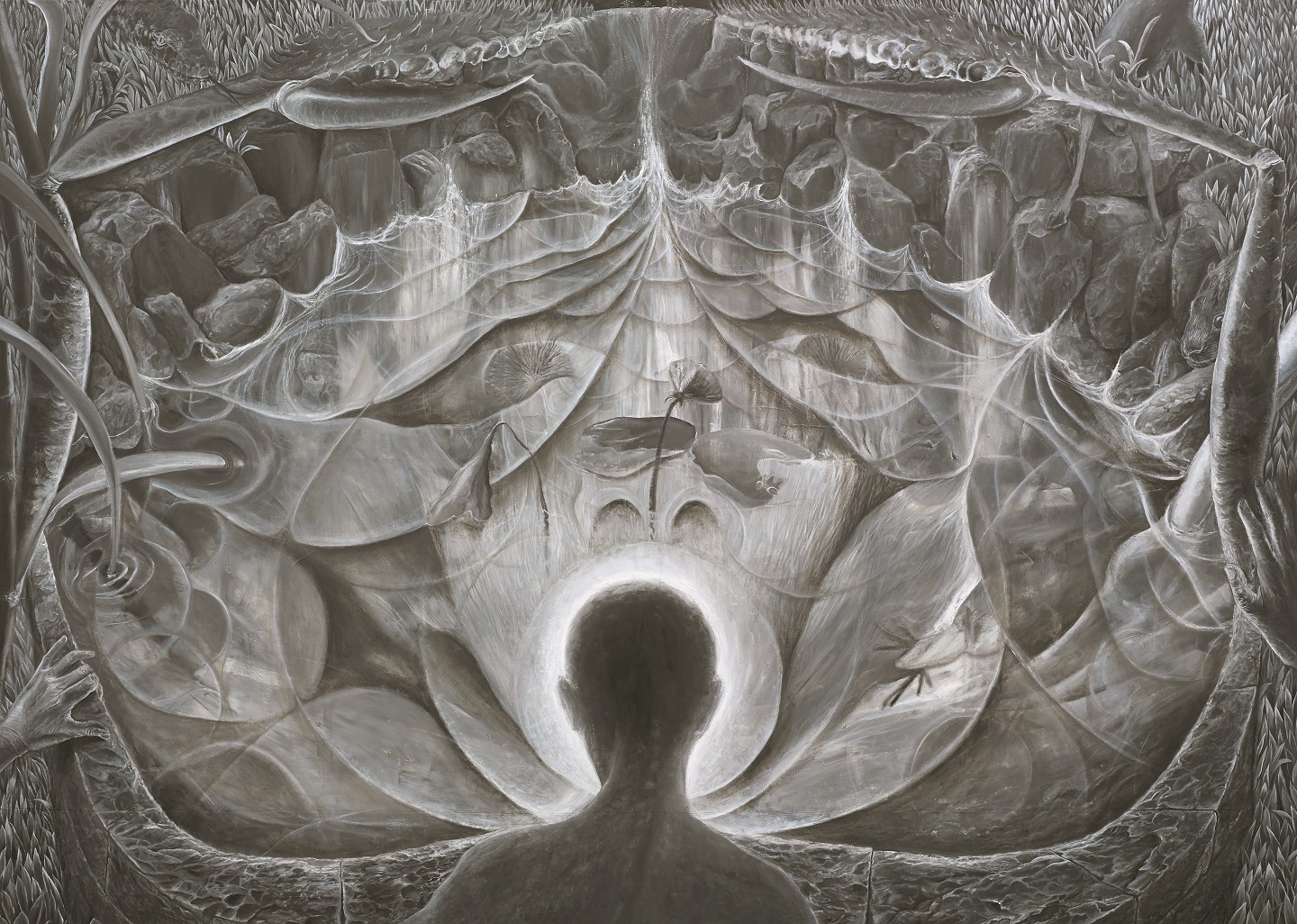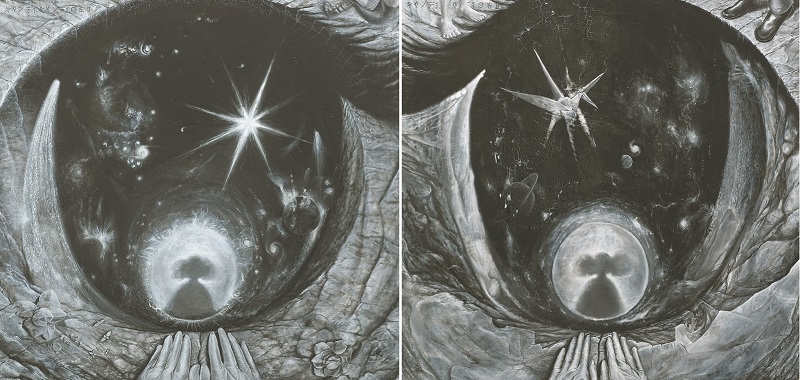
The Crab's Claw (For Capturing Artists), 2018
Whimsical and unpredictable, much like a child’s imagination, is the first impression one gets from Chang Yoong Chia’s latest series, How Are You? I Am Well.
And yet, the significance of the series is weighty as it marks the edge of the precipice that the 43-year-old artist feels he is on, be it in his life or his artistic practice.
“If I’m lucky, I’ll live to be 86. And after having been an artist for about 20 years, this is a midpoint for me. But when you reach here, you start to think, maybe the rest of the road is not going up anymore, and you’re actually going down from here,” he laughs.
“But I’m trying to confront this feeling of perhaps being stuck… and how to move on from here. It’s a personal reflection but also a question for the viewer, in a way.”
It is only natural for people to think of the past when they hit a crossroads. For Chang, whose art is known for its rich symbolism, it was only fitting that the trigger came in the form of an artwork he had done for a 2015 solo exhibition in Tokyo, which also inspired the title of the present exhibition.
“At first, the title was something funny. It’s a pun and a play on how we’d hear our own voice in echo if you were to stand at a well and call down,” Chang remarks.

The work stayed on his mind, which led to a reflection on growing up in an environment that had no art exposure. “ There was no one around me who did art. Also, growing up in this kind of environment, we are not taught to express ourselves. It’s like the title, when people ask, ‘how are you?’ we reply, ‘I am fine’. But it’s just an automatic response. There’s always a protective wall or layer.”
Reminiscing on his childhood where he’d see his reflection in a well, Chang feels that peering in and imagining a world beyond is not unlike looking at an artwork.
In fact, when he finally had the opportunity to go to Europe to see paintings by the great masters, he felt the familiar emotion of looking into a well. “It is like a world in itself — a painting has its own logic, its own rules within that frame.”
The description is apt when one looks at Chang’s works. The monochromatic paintings (and several charcoal drawings) depict wells in one form or another, used symbolically to form the “barrier” or frame within which Chang has created a unique world in each piece.
Admittedly, the rules of these worlds may not be evident to the viewer — having come from a place of personal contemplation by the artist— and can make for a disconcerting wander in the unknown. Nevertheless, it is a visual invitation beckoning us into another realm, to explore and grapple with the symbolisms for ourselves.
For example, one can sense the ominous mood in The Crab’s Claw (For Capturing Artists), 2018, with the legs of the crab setting the scene for an entrapment. In the middle, one sees the shape of a ghostly face devouring the “avatar”, here presumably the artist, standing before it. A snake’s head lurking at the top corner adds a layer of intrigue.
The snake makes a few more appearances in several other artworks, which also portray somewhat celestial and fantastical renditions of a carp, peacock and cat, to name but a few.
Interestingly, Chang says he drew inspiration for the articulation of this series from video gaming. “In many works, you see an avatar, be it a boy or a girl or just a pair of hands. Then, there is a barrier, which is the wall of the well, and then the passage into what lies beyond. The animals are like guardians, like the Chinese stone lions, where they either give you passage or repel you. In games, all elements are built and you just go in and respond to whatever comes your way. How you do it determines if you go to the next level. I find that it’s similar to painting in some ways, where the materials are given and you just work to build from it. And if you’re successful, you move on to the next.”
This is not the only childhood experience he philosophises about. Three related pieces hark back to a popular Japanese cartoon he had watched — Candy Candy. Two larger works portray the large eyes of the main character while a poem alluding to the character written by Chang is placed as the “mouth” on the wall of the gallery.

The artist’s boyhood fascination with the main character now extends to the fact that the main character of the story is American, even if she is voiced by a Japanese and is essentially a Japanese creation. “It’s an interesting fact for me, as a Chinese who cannot read or write in Mandarin.”
He deals with the sense of being someone who does not appear to be what or who they are in another work, The Giraffe, 2018, a poem written in a typography originally created by Chinese artist Xu Bing.
Chang sees the giraffe as a symbol of what is innate to others but unattainable to oneself. In this case, an accompanying painting, The Drinking Giraffe, 2017, hangs next to the poem, showing a giraffe drinking from a well, while a pair of hands do a shadow play of imitating the giraffe.
One gets the sense that How Are You? I Am Well is an exercise in reflection for the artist that ultimately emerged as an affirmative echo of “this is who I am”.
This is evident in the motifs and symbolisms, which appear simplified and have more clarity in comparison to previous works. While no less layered in its ideas, one can see the surefootedness that comes from the artist’s current vantage point.
For an artist whose process is as evocative as his artworks, Chang opted for oil paintings and charcoal drawings in this series, mediums that are very close to his heart.
“There’s a perception of painting, that it’s outmoded, not very exciting. But I still love it, it helps me realign myself as an artist. Furthermore, I chose to use oil paints. It has a rich history dating back to the Renaissance, where it was created through alchemy, as if like magic. I like that idea, to be able to evoke something magical.”
Where things will go from here for Chang, artistically, remains to be seen but he inadvertently set the tone with this statement: “I think I tended to more of my needs in this series; it’s a bit more freeing. But I don’t think I’ve gone all out yet.”
The exhibition is showing at A+ Works of ART, unit G-8, d6 Sentul, Jalan Sentul Sejahtera. Until Apr 7. For details, call 018 333 3399.


